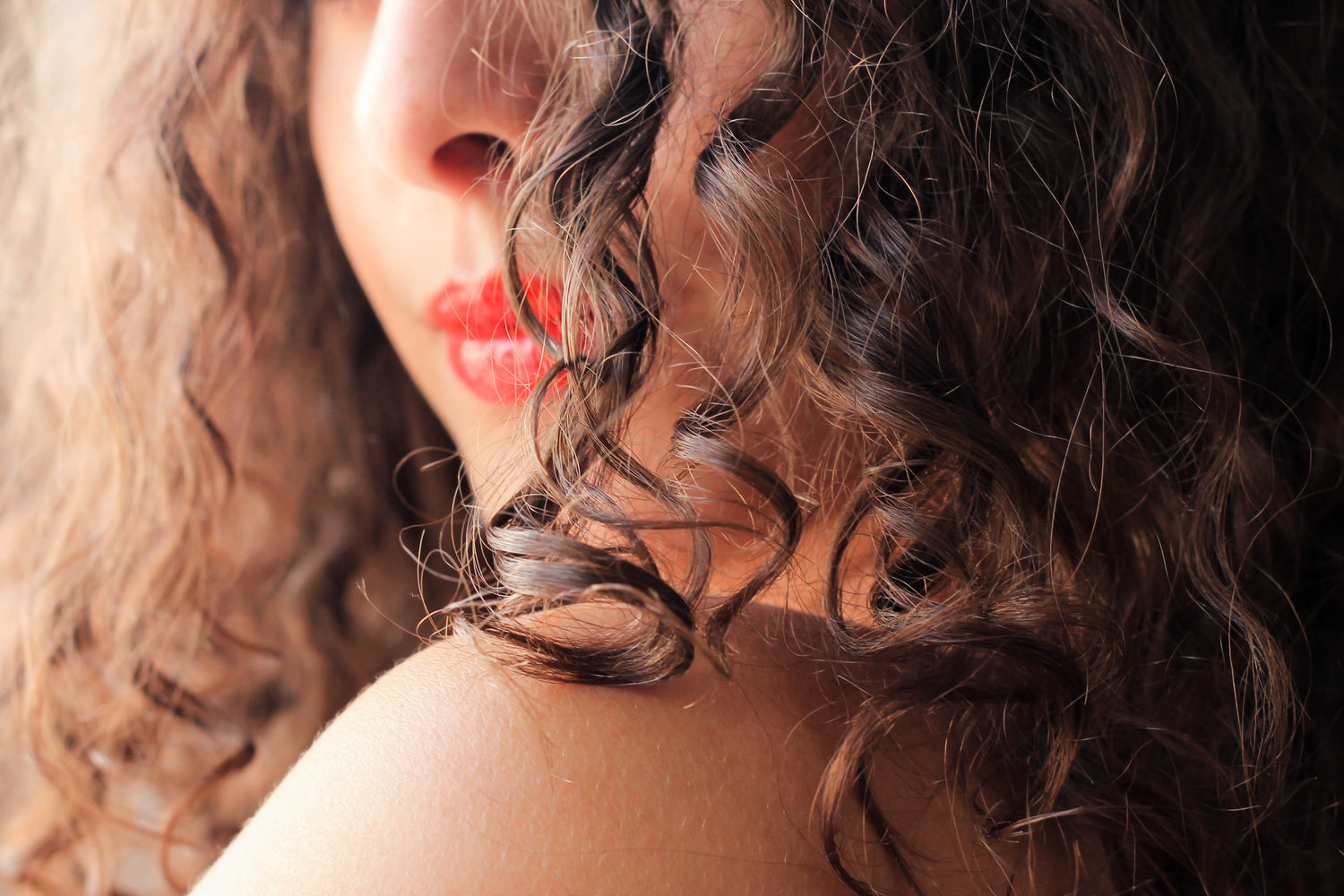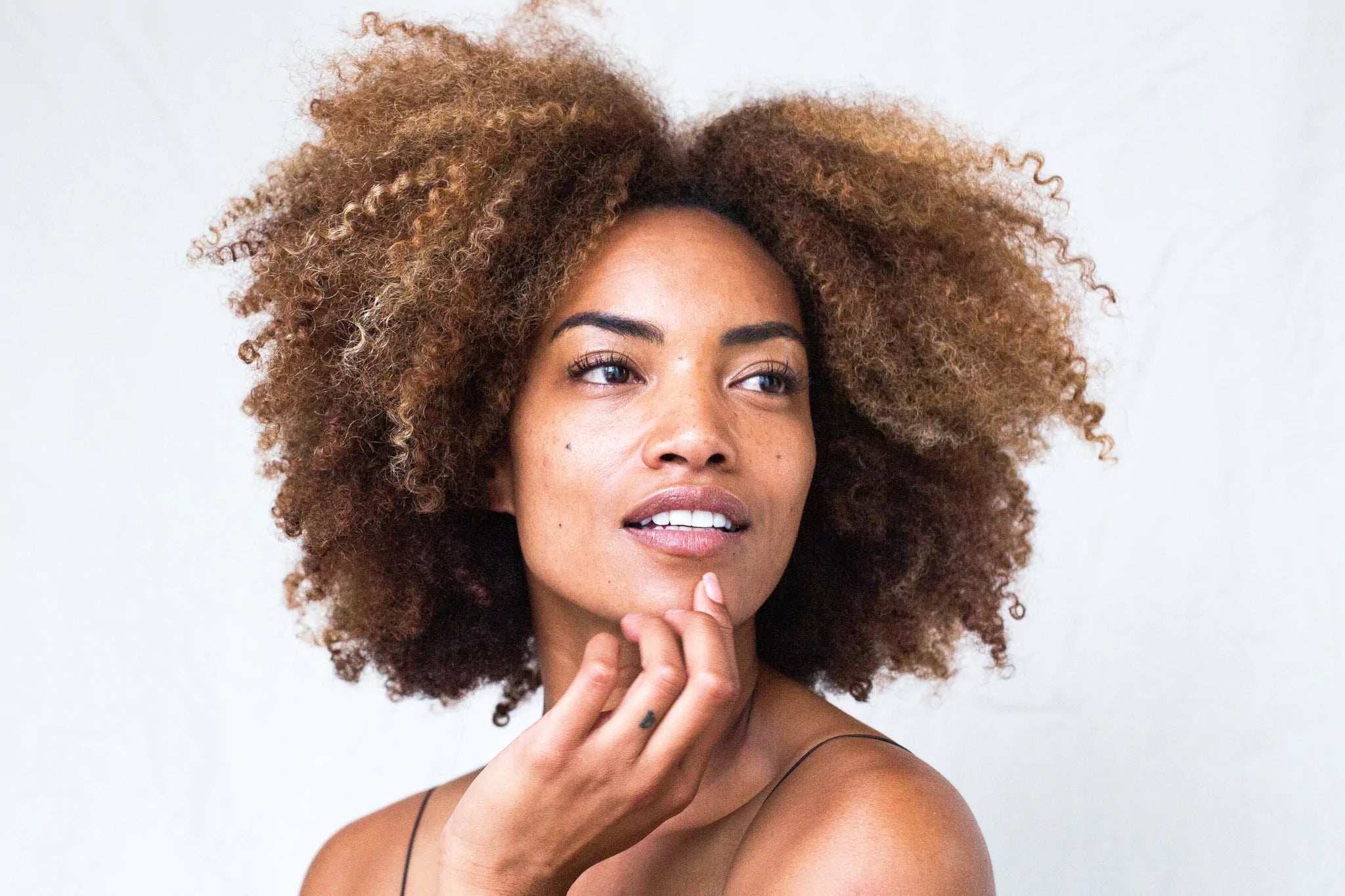Keeping your hair healthy will help it look lush and beautiful. No matter your specific hair type, getting into a healthy hair regimen will keep those locks, kinks and curls in perfect shape. The best part is that a great healthy hair care routine doesn’t have to take hours and hours. Nobody has time for that! Here are some simple healthy hair tips you can use to keep your hair strong and glowing.
Healthy Hair Tips: Get Started With the Right Tools
A healthy hair regimen starts with the right tools.
We get it, trying to find the right tools can be overwhelming, especially considering how many different kinds of products are available.
Let’s break it down. Here’s the bare minimum need to get started:
Once you have these tools, here are seven ways you can put them to work for you.
1. Create a Healthy Hair Regimen That Fits Your Hair Type
You may be tempted to copy someone else’s hair routine, especially if their look is FIRE. But that’s their hair. Even though someone’s hair might be similar to yours, it’s not exactly the same. You’ve got to find out what the best regimen is for your specific hair type. Here are a number of factors you need to take into account:
- Porosity
- Thickness
- Density
- Lifestyle
These are the individual elements that come with your hair. Each of them is going to impact what works best for your hair. The best way to figure out the best routine is through trial and error. Try something for a month or two; if it isn’t working after that time, then make a tweak to your product selection!
A healthy hair routine is extremely important.
Experimenting and adjusting is key to finding your perfect routine. So keep trying new things, and work with your hair.
2. Shampoo Your Hair
A healthy hair care routine for natural hair requires a lot of different products, which means that you’ll gain build up in your hair and scalp over time.
If you want your hair to stay healthy, you need to let your scalp breathe. This means you need to cleanse your hair with a gentle, sulfate-free shampoo somewhere between a weekly and monthly basis, depending on your hair.
You can figure out how frequently to cleanse your hair by experimenting. If your hair feels greasy, dirty, lifeless, or your products don’t seem to work anymore, then that’s a sign that you need to shampoo more often. If your hair feels dry, brittle, or frizzy, then shampoo less often.
Keep in mind that the less frequently you shampoo, the lighter you’ll want to go on the products. Shampooing more often, on the other hand, means you’ll need to stay on top of moisturizing so your hair doesn’t get too dry or brittle.
3. Condition, Condition, Condition
There are multiple types of conditioner that you’ll need to include in your hair care routine:
- Rinse-out conditioner. You’ll use this weekly or even bi-weekly when you’re in the shower and your hair is still wet.
- Leave-in conditioner. You’ll apply this after your hair has been washed. Leave-in will replenish the moisture in your hair and assist with the styling.
- Deep conditioner. You’ll use a deep conditioner once a month, or every couple of weeks. It’s a nourishing treatment that you leave on your hair for a certain amount of time, then rinse out. It can help you detangle and soften your curls.
4. Moisturize Early and Often
When it comes to natural hair, moisturizing solves a whole slew of problems. It can help with breakage, dryness, matting, tangling, and more.
The porosity of your hair (e.g., its ability to absorb and retain moisture) is also relevant. If you have low hair porosity, for example, your hair has difficulty retaining moisture, and is going to need a little help.
To properly moisturize your hair you need to focus on the ends, and add it in right before going to bed. Then seal in the moisture with a sealant or anti-humectant. Great sealant choices include shea butter, avocado oil, and olive oil, among others.
5. Detangle Regularly
Detangling can be crucial to preventing hair loss, matting, dryness, and breakage. To effectively detangle your hair, use either a wide-toothed comb or your fingers, and work your way through the ends of your hair. Always pull down, and work your way up.
Doing this on damp hair and with a detangling product can help as well.
6. Use Protective Styling
Everyone has a different preference for protective styles: buns, braids, wearing a night bonnet, etc... These help you maintain moisture and protect you from damage.
If you use styling products to help those styles hold, be sure to watch out for building up, which may alter your washing schedule.
7. Stick To Your Routine
Sticking to a routine is hard; sticking to a new routine is even harder. However, if you want to see results from your healthy hair care routine you need to be consistent.
Keep in mind that your hair needs time to adjust. You should give it a month or two to see how it handles the new products and routine.
Here are some tips to help you stick to that routine:
- Keep it simple.
- Structure it on a weekly or biweekly basis so you can keep track of things.
- Coordinate with calendar days (i.e. Monday is wash day, Friday is condition day, etc.).
Here’s an example of a routine; remember, you need to adjust and adapt to your specific hair type.
- Full wash day once a month (shampoo, conditioner, deep conditioner).
- Co-wash or deep condition biweekly.
- Use a protective style during the week.
- Wear afro or twist out during the weekends.
- Use products like detangling spray, growth serum, butter/oil to help style.
- Sleep in a satin bonnet to protect hair.
-
Trim your hair every three months.



